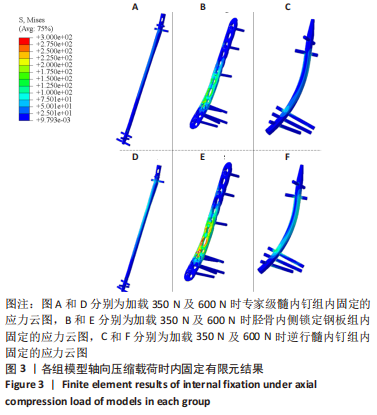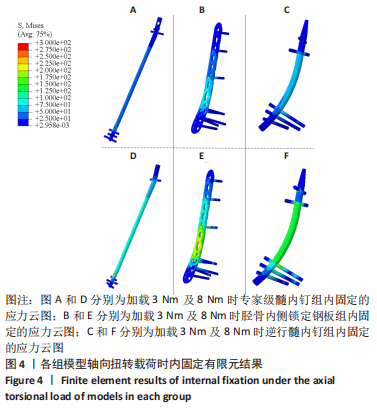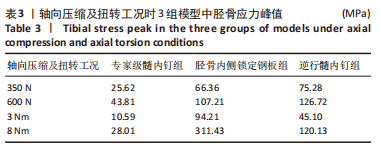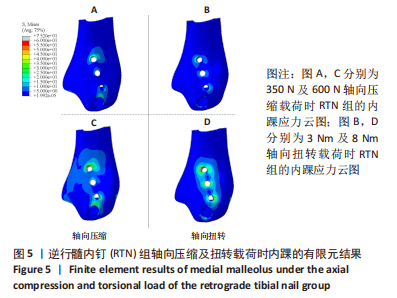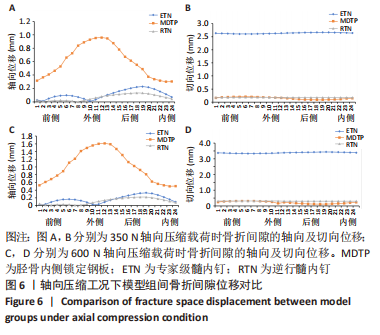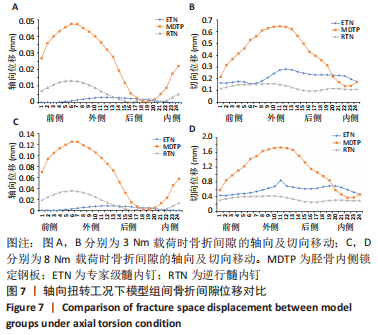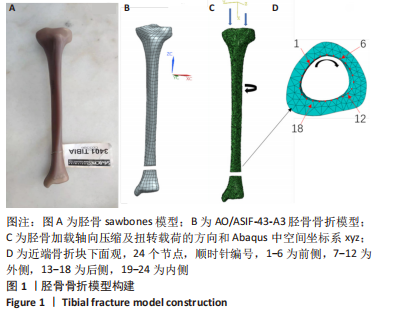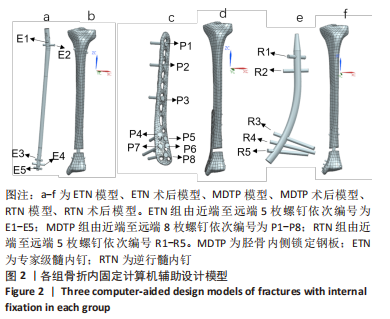[1] 陈安富, 唐旭东, 黄凯. 髓内钉与钢板内固定治疗成人胫骨干远端骨折的疗效比较[J]. 中华创伤骨科杂志,2019,21(8):706-709.
[2] SITNIK A, BELETSKY A, SCHELKUN S. Intra-articular fractures of the distal tibia: current concepts of management. Efort Open Rev. 2017;2(8): 352-361.
[3] BLEEKER NJ, VAN DE WALL BJM, FFA IJ, et al. Plate vs. nail for extra-articular distal tibia fractures: How should we personalize surgical treatment? A meta-analysis of 1332 patients. Injury. 2021;52(3):345-357.
[4] LIU XK, XU WN, XUE QY, et al. Intramedullary Nailing Versus Minimally Invasive Plate Osteosynthesis for Distal Tibial Fractures: A Systematic Review and Meta-Analysis. Orthop Surg. 2019;11(6):954-965.
[5] HOFMANN GO, GONSCHOREK O, BÜHLER M, et al. Retrograde Nagelung der Tibia. Trauma Und Berufskrankheit. 2001;3(2 Supplement):S303-S308.
[6] KUHN S, APPELMANN P, PAIRON P, et al. The Retrograde Tibial Nail: presentation and biomechanical evaluation of a new concept in the treatment of distal tibia fractures. Injury. 2014;45 Suppl 1:S81-S86.
[7] KUHN S, APPELMANN P, MEHLER D, et al. Retrograde tibial nailing: a minimally invasive and biomechanically superior alternative to angle-stable plate osteosynthesis in distal tibia fractures. J Orthop Surg Res. 2014;9:35.
[8] CHEN F, HUANG X, YA Y, et al. Finite element analysis of intramedullary nailing and double locking plate for treating extra-articular proximal tibial fractures. J Orthop Surg Res. 2018;13(1):12.
[9] 杨志刚, 甘霖, 叶俊星. 胫骨远端骨折有限元模型的建立及稳定性分析[J]. 中国组织工程研究,2016,20(17):2540-2545.
[10] SOWMIANARAYANAN S, CHANDRASEKARAN A, KUMAR RK. Finite element analysis of a subtrochanteric fractured femur with dynamic hip screw, dynamic condylar screw, and proximal femur nail implants-a comparative study. Proc Inst Mech Eng H. 2008;222(1):117-127.
[11] 贾军锋, 唐承杰, 乐劲涛, 等. 胫骨远端骨折3种不同固定方式的有限元分析[J]. 中国组织工程研究,2019,23(32):5188-5194.
[12] 张强, 巫宗德, 刘亮, 等. 胫骨内侧、外侧解剖锁定钢板固定胫骨中下段外旋型螺旋骨折的有限元分析[J]. 中国组织工程研究,2022,26(36):5750-5754.
[13] GREENFIELD J, APPELMANN P, LAFON Y, et al. A comparative biomechanical study of the Distal Tibia Nail against compression plating for the osteosynthesis of supramalleolar corrective osteotomies. Sci Rep. 2021;11(1):1-12.
[14] BEIRAMI S, NIKKHOO M, HASSANI K, et al. A comparative finite element simulation of locking compression plate materials for tibial fracture treatment. Comput Methods Biomech Biomed Engin. 2021;24(10): 1064-1072.
[15] ALBAREDA J, IBARZ E, MATEO J, et al. Are the unreamed nails indicated in diaphyseal fractures of the lower extremity? A biomechanical study. Injury. 2021;52 Suppl 4: S61-s70.
[16] KUHN S, APPELMANN P, PAIRON P, et al. A new angle stable nailing concept for the treatment of distal tibia fractures. Int Orthop. 2014;38(6):1255-1260.
[17] KUHN S, GREENFIELD J, ARAND C, et al. Treatment of distal intraarticular tibial fractures: A biomechanical evaluation of intramedullary nailing vs. angle-stable plate osteosynthesis. Injury. 2015;46 Suppl 4:S99-S103.
[18] BLEEKER NJ, REININGA IHF, VAN DE WALL BJM, et al. Difference in Pain, Complication Rates, and Clinical Outcomes After Suprapatellar Versus Infrapatellar Nailing for Tibia Fractures? A Systematic Review of 1447 Patients. J Orthop Trauma. 2021;35(8):391-400.
[19] HU L, XIONG Y, MI B, et al. Comparison of intramedullary nailing and plate fixation in distal tibial fractures with metaphyseal damage: a meta-analysis of randomized controlled trials. J Orthop Surg Res. 2019; 14(1): 30.
[20] SHEN J, XU J, TANG MJ, et al. Extra-articular distal tibia facture (AO-43A): A retrospective study comparing modified MIPPO with IMN. Injury. 2016;47(10): 2352-2359.
[21] WANG B, ZHAO Y, WANG Q, et al. Minimally invasive percutaneous plate osteosynthesis versus intramedullary nail fixation for distal tibial fractures: a systematic review and meta-analysis. J Orthop Surg Res. 2019;14(1):456.
[22] BAHAMONDE L, ZAMORANO A, ZECCHETTO P. Far proximal and far distal tibial fractures: management with intramedullary nails, Tibia Pathology and Fractures: Intech Open, 2020.
[23] GIANNOUDIS PV, TZIOUPIS C, PAPE HC. Fat embolism: the reaming controversy. Injury. 2006;37 Suppl 4:S50-S58.
[24] MORIZANE K, TAKEMOTO M, NEO M, et al. Occipital and external acoustic meatus to axis angle: a useful predictor of oropharyngeal space in rheumatoid arthritis patients with atlantoaxial subluxation. J Neurosurg Spine. 2019:1-8. doi: 10.3171/2019.3.SPINE181390.
[25] 胡翰生, 王静成, 卢志华, 等. 髋关节三维有限元模型的构建及关节囊修复预后分析[J]. 南方医科大学学报,2020,40(12):1826-1830.
[26] 林奕鹏, 岳凯, 徐盈舒, 等. 新型可吸收空心螺钉结合不可吸收缝线张力带固定治疗髌骨骨折:与传统改良张力带的对比[J]. 中国组织工程研究,2019,23(22):3506-3511.
[27] SAMSAMI S, HERRMANN S, PÄTZOLD R, et al. Finite element analysis of Bi-condylar Tibial Plateau fractures to assess the effect of coronal splits. Med Eng Phys. 2020; 84:84-95.
[28] DENG Y, OUYANG H, XIE P, et al. Biomechanical assessment of screw safety between far cortical locking and locked plating constructs. Comput Methods Biomech Biomed Engin. 2021;24(6):663-672.
[29] GIANNOUDIS PV, GIANNOUDIS VP. Far cortical locking and active plating concepts: New revolutions of fracture fixation in the waiting? Injury. 2017;48(12):2615-2618.
[30] AUGAT P, HOLLENSTEINER M, VON RÜDEN C. The role of mechanical stimulation in the enhancement of bone healing. Injury. 2021;52 Suppl 2:S78-S83.
[31] NOURISA J, ROUHI G. Biomechanical evaluation of intramedullary nail and bone plate for the fixation of distal metaphyseal fractures. J Mech Behav Biomed Mater. 2016;56:34-44.
[32] 史金友, 肖玉周, 吴敏, 等. 微动本质及骨折愈合生物力学分期的研究[J]. 中国修复重建外科杂志,2021,35(9):1205-1211.
[33] EPARI DR, TAYLOR WR, HELLER MO, et al. Mechanical conditions in the initial phase of bone healing. Clin Biomech (Bristol, Avon). 2006;21(6):646-655.
[34] SCHELL H, EPARI DR, KASSI JP, et al. The course of bone healing is influenced by the initial shear fixation stability. J Orthop Res. 2005;23(5):1022-1028.
[35] 李刚, 杜新辉. 专家型胫骨髓内钉和锁定加压钢板内固定术在胫骨远端骨折治疗中的临床疗效对比观察[J]. 创伤外科杂志,2017,19(8):590-594.
[36] 何敏, 李正茂, 谭文甫, 等. 新型逆行胫骨髓内钉治疗胫骨远端骨折的初步疗效分析[J]. 中华创伤骨科杂志,2022,24(4):334-338.
[37] BASERI A, BAGHERI MA, ROUHI G, et al. Fixation of distal tibia fracture through plating, nailing, and nailing with Poller screws: A comparative biomechanical-based experimental and numerical investigation. Proc Inst Mech Eng H. 2020; 234(10):1129-1138.
[38] PENG B, WAN T, TAN W, et al. Novel Retrograde Tibial Intramedullary Nailing for Distal Tibial Fractures. Front Surg. 2022;9:899483.
[39] GARDNER MP, CHONG AC, POLLOCK AG, et al. Mechanical evaluation of large-size fourth-generation composite femur and tibia models. Ann Biomed Eng. 2010; 38(3):613-620.
[40] 张雪玲, 任武, 王淑婷, 等. 人体下肢生物力学仿真和实验的研究现状与发展趋势[J]. 生物医学工程研究,2021,40(4):448-454.
[41] BUZZATTI L, KEELSON B, VANLAUWE J, et al. Evaluating lower limb kinematics and pathology with dynamic CT. Bone Joint J. 2021;103-b (5):822-827.
|

